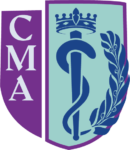We are early in the flu season and yet flu is on the rampage. Flu hospitalizations in the Greater Cincinnati Area increased 107% in the last week, the week after the Thanksgiving holiday. Hospitals across the country are at 80% capacity due to influenza, COVID-19, respiratory syncytial virus (RSV), and other respiratory viruses. The influenza virus can be one of any four major types A, B, C, and D. Seventy-seven percent of this season’s strain is Type A (H3N2). Even though the vaccine is designed to be effective against all four Types of influenza virus (quadrivalent), the predominance of one Type makes it easier to craft the vaccine to fight it. Although it is too early to know the efficacy of the 2022 influenza vaccine in the US, the data from the southern hemisphere, which has already seen its flu season, shows that the vaccine was approximately 50% effective. Remember that the main purpose of the flu vaccination is to prevent death and severe illness.
Anecdotal and preliminary USA information indicates that the available flu vaccine typically results in a milder clinic course and less likelihood of death from the flu or its complications. With that said, 8.7 million Americans are known to have already become infected (last year’s total number), 78,000 hospitalized, and 4,500 have died this season. The flu vaccine will lessen your chance of the potentially debilitating fever, chills, sore throat, runny nose, coughing and sneezing, and the run-down achy body caused by this very contagious virus. These acute symptoms tend to resolve in 5-7 days, but some people suffer from complications such as pneumonia, ear and sinus infections. The complications of influenza can be worse during pregnancy, as well. Those individuals with chronic medical conditions such as diabetes, asthma, and heart failure may experience worsening of their conditions if they become infected with influenza. Getting a flu vaccination will help prevent you from missing school, work, or even the upcoming family holiday celebrations.
Fortunately, RSV, which represents the second leg of this “Tripledemic” is beginning to wane. Nevertheless, people over 65 years of age, individuals with preexisting conditions or who are immunocompromised, and babies under one year old need ongoing attention. If they are symptomatic and experiencing high fever and shortness of breath, they need to have the nasal swab test for RSV. Early diagnosis and supportive care are the keys to good outcomes.
Even though we all see fewer people masked, COVID-19 IS NOT OVER! Ohio’s Hamilton County, the three abutting Ohio counties, and Dearborn County of Indiana are now at the CDC’s MEDIUM levels of COVID-19. All of these Greater Cincinnati counties spent the majority of the last three months in the LOW category. Despite us all wanting to be done with this SARSCoV2 virus, its impact is rising again. The data shows that Ohio has seen a 52% increase in cases over the last two weeks. The USA has experienced a 25% increase in known cases and hospitalizations over the last two weeks. Deaths remain static at roughly 350 per day.
There is good news on the COVID-19 vaccination front. First, 68% of Americans have been vaccinated and 34% have been boosted. In the sixty-five and up age group, 93% of Americans have been vaccinated and 67% have been boosted. Any wonder why they reach their seventh decade? Secondly, booster vaccination, using either the bivalent Pfizer or Moderna vaccines, has now been approved for all children 6 months of age and older. These boosters should be given no sooner than two months after the completion of the primary vaccination.
Prevention of any of these viral ailments would be a panacea but is not always doable. Shortages in medications for treating the signs and symptoms of these viruses, such as OTC’s, Tamiflu, and amoxicillin are another reason to endeavor to avoid these diseases. We can all minimize our risk of each of these respiratory viruses. Vaccinate for the flu and COVID-19. WASH your hands, keep your hands away from the eyes, nose, mouth, or other parts of the face. Socially distance and isolate, as necessary. I am aware of at least two area medical facilities that have reimplemented mask requirements. WEAR your mask in indoor public places!
Clyde E. Henderson, MD
Cincinnati Medical Association

